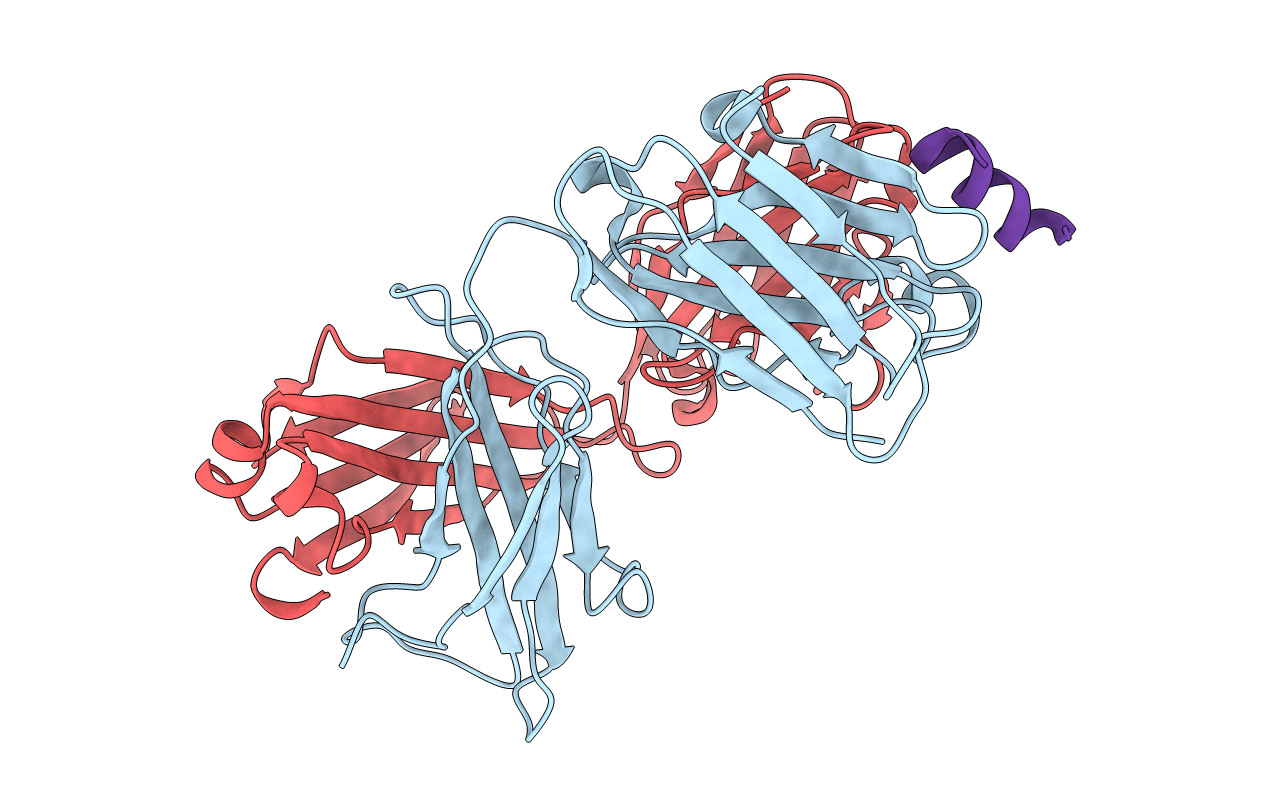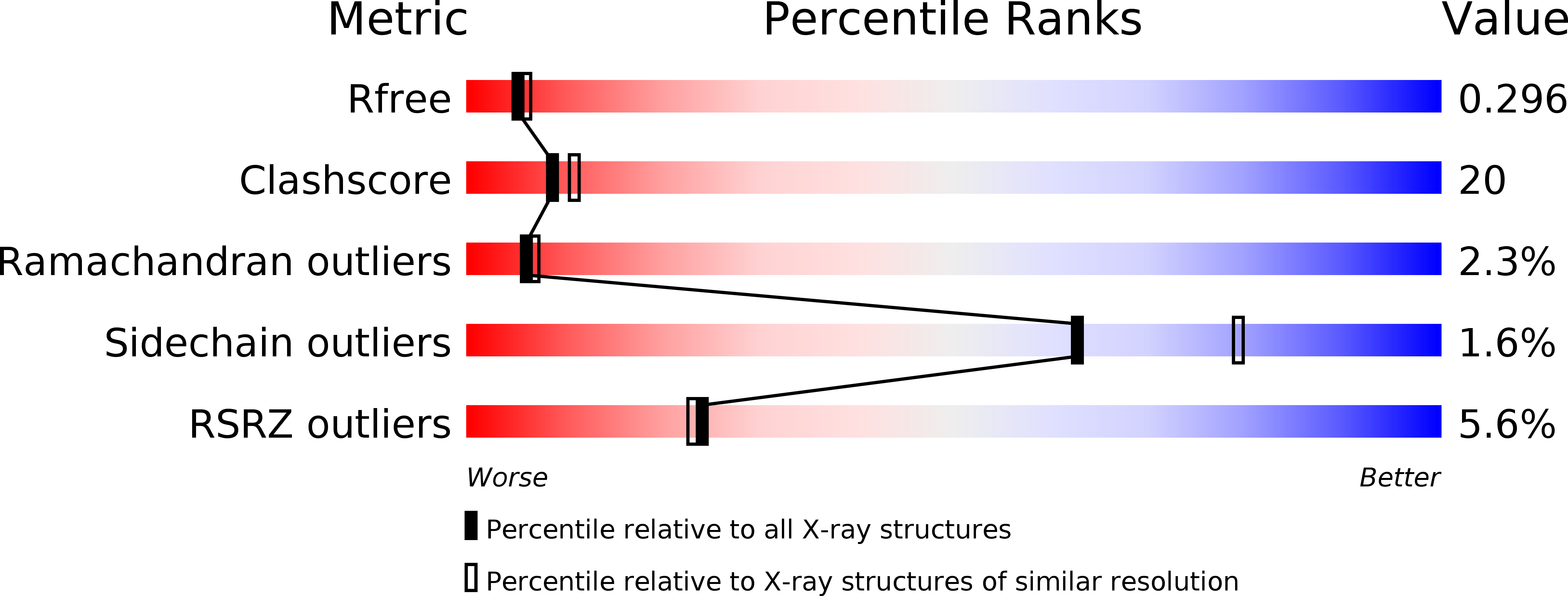
Deposition Date
2018-02-13
Release Date
2018-09-12
Last Version Date
2024-10-23
Entry Detail
PDB ID:
6CEZ
Keywords:
Title:
Crystal Structure of Rabbit Anti-HIV-1 gp120 V2 Fab 16C2 in complex with V2 peptide ConB
Biological Source:
Source Organism:
Oryctolagus cuniculus (Taxon ID: 9986)
Human immunodeficiency virus 1 (Taxon ID: 11676)
Human immunodeficiency virus 1 (Taxon ID: 11676)
Host Organism:
Method Details:
Experimental Method:
Resolution:
2.40 Å
R-Value Free:
0.29
R-Value Work:
0.23
R-Value Observed:
0.24
Space Group:
P 1 21 1


